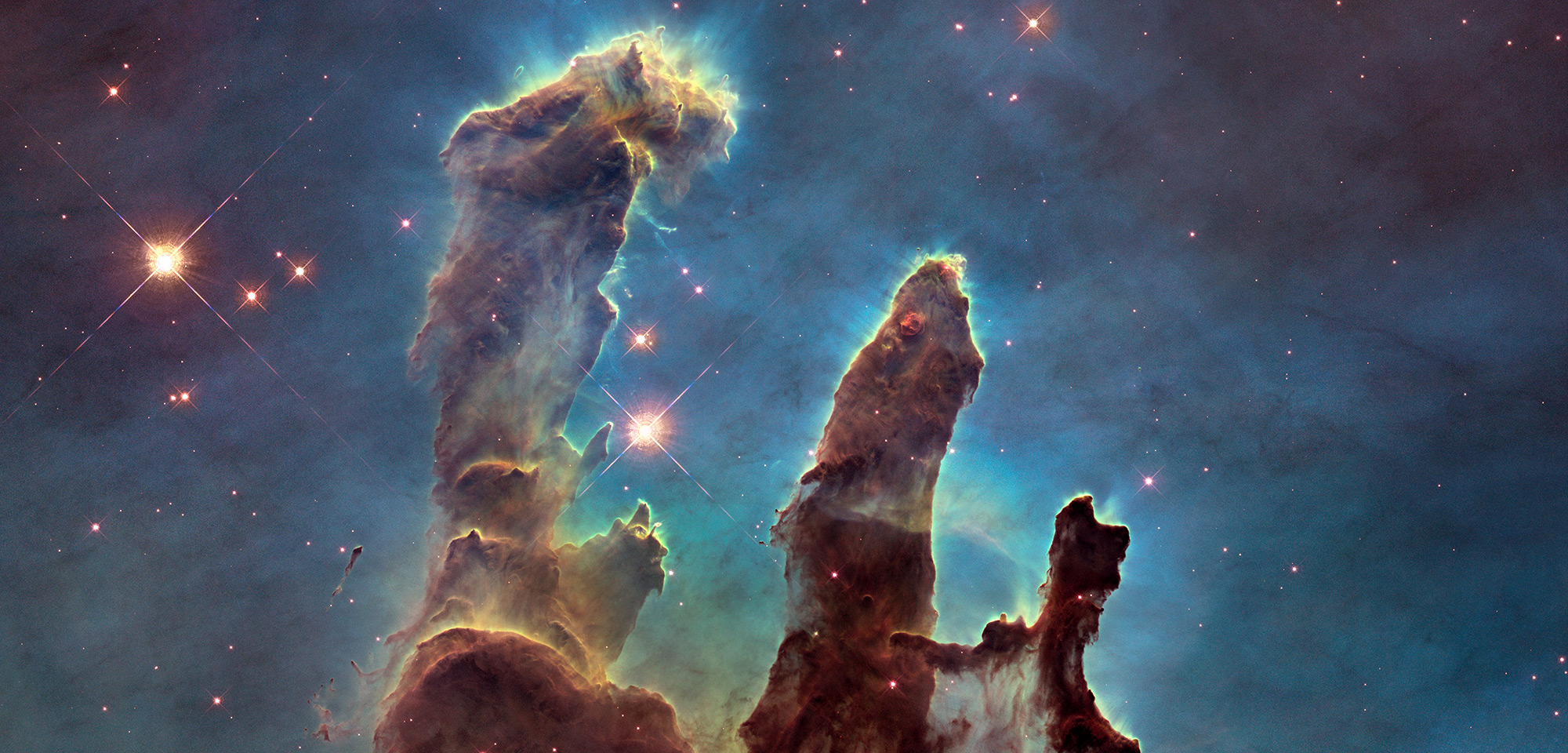This post has been read 1523 times!
 July 12, 2019- by Steven E. Greer, MD
July 12, 2019- by Steven E. Greer, MD
I was watching some National Geographic shows for “Space Week”, in anticipation of the 50th anniversary of Neil Armstrong stepping onto the moon in 1969. One show was about the Hubble Space telescope.
In 1995, photos were captured of the Eagle Nebula 7000-light-years away. It has since been called The Pillars of Creation because one can see stars actually forming out of the dust.
Wikipedia explains the background for the nickname Pillars of Creation, “When William Jennings Bryan published The World’s Famous Orations in 1906, he included an 1857 sermon by London pastor Charles Haddon Spurgeon titled “The Condescension of Christ”. In it, Spurgeon uses the phrase to convey not only the physical world but also the force that keeps it all together, emanating from the divine: “And now wonder, ye angels,” Spurgeon says of the birth of Christ, “the Infinite has become an infant; he, upon whose shoulders the universe doth hang, hangs at his mother’s breast. He who created all things, and bears up the pillars of creation.”
(Now, things get weird and spiritual. I had no idea that William Jennings Bryan was behind this when I began writing. He is a distant relative of mine.)
Then, it occurred to me that humans literally discovered the process of “god” creating the heavens back in 1995. They caught it in the act. Some of the stars born there will eventually blow up as super novas. This star dust is where all of the elements on earth are derived. Precious metals, calcium, carbon, etc. are all created in stars.
We saw in photos, for the first time, from where we originate. The infant at the mother’s breast is made of star dust. Stars are infinite in number and an eternity away, essentially.
All of these lofty spiritual concepts described in religious texts are explained less romantically by astronomy. Heaven is where people believe they go to rest for eternity. That timeless concept is appreciated when Hubble captures galaxies at the edge of the known universe.
However, for those who prefer to think of god in the traditional biblical sense, there is plenty of room to still believe. We have just started to peel the onion.
What fascinates me in almost a religious way is chaos. After the universe formed, why weren’t all stars and galaxies identical? Why is there infinite diversity? That is beyond the scope of my small brain.
Even what we have discovered already, such as the Eagle Nebula and Pillars of Creation, seems to be exactly what religious texts describe, as do many other celestial images. It is no surprise that godly thoughts fell upon the Apollo astronauts. When Apollo 8 was orbiting the moon and saw the first Earthrise, they read from the Book of Genesis:
In the beginning God created the heaven and the earth.
And the earth was without form, and void; and darkness was upon the face of the deep. And the Spirit of God moved upon the face of the waters.
And God said, Let there be light: and there was light.
And God saw the light, that it was good: and God divided the light from the darkness
Look at the Pillars of Creation. One can literally see all of those events from the Book of Genesis happening.
One of the best films ever was 2001: A Space Odyssey. It is laden with religious suggestions. Stanley Kubrick was on to something
For a variety of reasons, liberals hate the space program and regular Americans can’t comprehend it. If Trump and NASA were smart, they would start to change that by explaining how they are trying to get closer to god and heaven. Exploring the heavens is not a metaphor. It is literally what space exploration is doing.
Update July 24, 2022- Sounds from the Eagle Nebula and Pillars of Creation were recorded.
